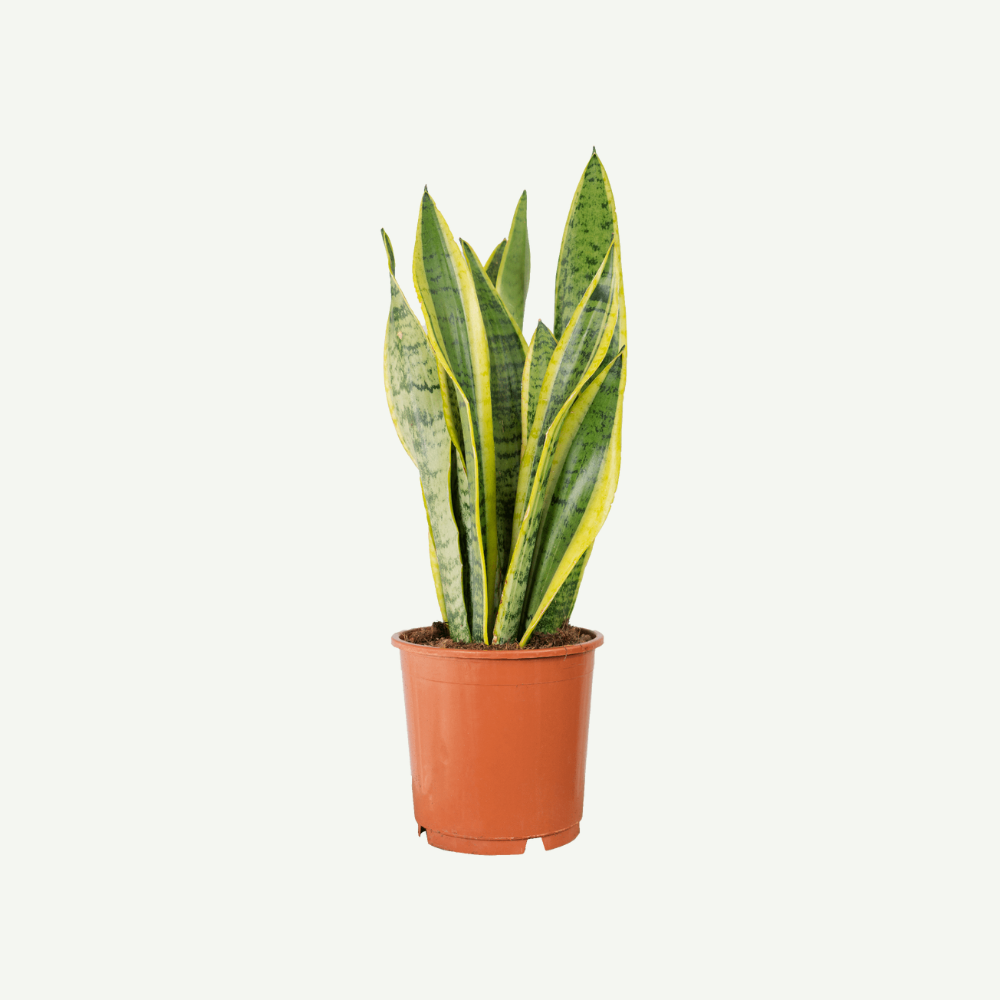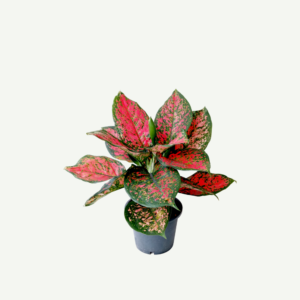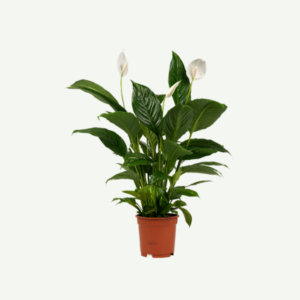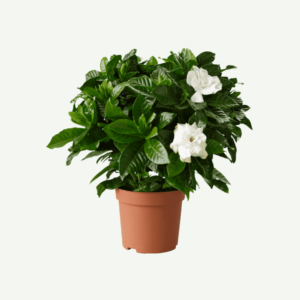Snake Plant, scientifically known as Sansevieria trifasciata, is a popular and resilient indoor houseplant from the Asparagaceae family. Native to West Africa, the Snake Plant has become a favorite choice for indoor gardening due to its striking appearance, easy care, and air-purifying qualities. It is also known by other common names, such as Mother-in-law’s Tongue and Saint George’s Sword.
Care of Snake Plant:
Light: Snake Plants can tolerate a wide range of light conditions. They can grow in bright, indirect light, as well as low light conditions. However, they will display more vibrant variegation in brighter light. Avoid direct sunlight for prolonged periods, as it can scorch the leaves.
Temperature: Snake Plants thrive in average room temperatures between 60°F to 85°F (15°C to 29°C). They are relatively tolerant of temperature fluctuations, but avoid exposing them to cold drafts or extreme heat.
Watering: Snake Plants are drought-tolerant and prefer to be slightly underwatered than overwatered. Allow the top inch or two of the soil to dry out before watering again. Overwatering can lead to root rot, so it’s crucial not to let the plant sit in waterlogged soil.
Humidity: Snake Plants are adaptable to average indoor humidity levels and do not require additional misting or humidification.
Soil: A well-draining potting mix is suitable for Snake Plants. A cactus or succulent-specific mix or a blend of regular potting soil with perlite or sand for added drainage works well.
Fertilization: Snake Plants are not heavy feeders. Fertilize them sparingly, usually once every 2-3 months during the active growing season (spring and summer) with a balanced, diluted liquid fertilizer.
Characteristics of Snake Plant:
Leaves: The most recognizable feature of the Snake Plant is its long, upright, and sword-shaped leaves. The leaves are thick and succulent, with a deep green color and yellow or silvery variegation along the edges, depending on the variety. Some varieties may have different patterns and colors.
Growth Habit: Snake Plants have a rosette-like growth habit, with the leaves arising from a central point and growing in an upward direction. The leaves can vary in size, with some reaching several feet in height, while others remain compact and smaller.
Flowers: In their natural habitat, Snake Plants can produce small, greenish-white, tubular flowers on tall spikes. However, flowering is relatively rare when grown as indoor houseplants, and the plant is mainly appreciated for its foliage.
Landscape Use of Snake Plant:
Shaded Garden Beds: In regions with a mild or tropical climate, you can plant snake plants in shaded or partially shaded garden beds. Their upright foliage and architectural look can add a touch of elegance to shaded garden areas.
Understory Plant: In gardens with taller trees or shrubs, these plants can be used as understory plants. They adapt well to filtered light conditions beneath taller vegetation, adding a sleek and modern feel to the lower layers of the garden.
Container Gardens: Grow these plants in large pots or decorative containers to place on patios, decks, or in courtyard gardens. Their striking, vertical leaves make them an eye-catching focal point in outdoor living spaces.
Accent Plant: Use these plants as accent plants in garden beds, along walkways, or near water features. Their unique, architectural leaves can draw attention and add a touch of modern beauty to the landscape.
Indoor/Outdoor Transition Areas: Place these plants in covered outdoor spaces like verandas or screened-in porches, where they can thrive in a sheltered environment while providing a bridge between the indoor and outdoor living areas.
Educational Gardens: These plants can be used in botanical gardens, public parks, or educational institutions to educate visitors about the diversity of plant species and to showcase their sleek appearance and adaptability.
When incorporating These plants into landscape or garden designs, it’s essential to consider the local climate. While they can thrive outdoors in mild and tropical regions, they are not suitable for areas with frost or extreme cold. Ensure that the planting area has well-draining soil and provides protection from strong winds and excessive sun exposure, as these plants prefer indirect or dappled light and can be sensitive to harsh conditions.
Additionally, regular watering and protecting the plants from pests are key aspects of their care when used in landscape settings. Snake plants are known for their low maintenance and modern aesthetic, making them a versatile addition to both indoor and outdoor spaces in the right climate.






